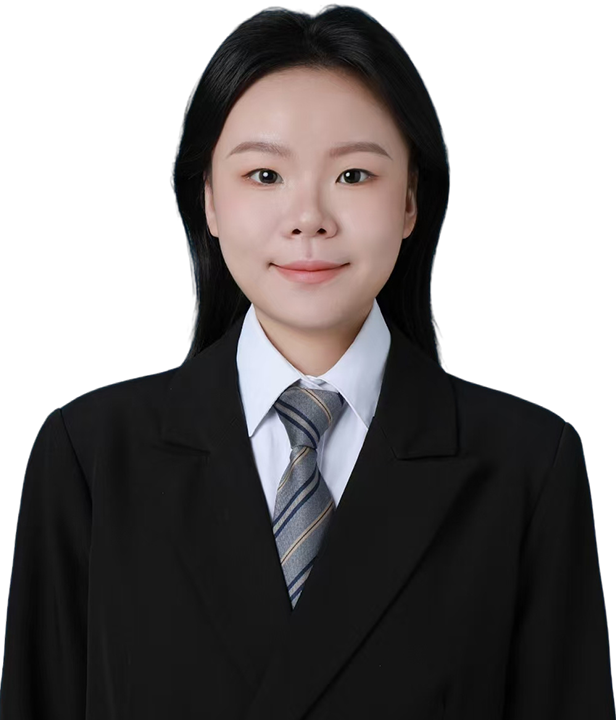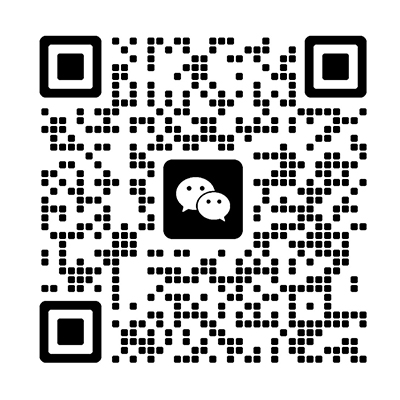©2024 Zhejiang Zhiben Law Firm. All rights reserved.Zhejiang
LABEL: Healthcare and Medicine ,
On August 9, 2024, the State Administration for Market Regulation ("SAMR") released the "Anti Monopoly Guidelines for the Pharmaceutical Industry (Draft for Comments)" and publicly solicited opinions from the public. As early as 2021, the former Anti Monopoly Commission of the State Council formulated and released the "Anti Monopoly Guidelines for Active Pharmaceutical Ingredients" ("Anti Monopoly Guidelines for Active Pharmaceutical Ingredients"), which clarified the basic rules, ideas, and methods of anti-monopoly supervision in the active pharmaceutical ingredient field based on the prominent problems and characteristics of the field, and refined the criteria for identifying monopolistic behavior. This draft for soliciting opinions is based on the current development status and characteristics of China's pharmaceutical industry. On the basis of absorbing the Anti Monopoly Guidelines for Active Pharmaceutical Ingredients, it further expands the scope of application to the entire pharmaceutical industry. Combined with previous law enforcement cases, it clarifies the basic principles of anti-monopoly law enforcement in the pharmaceutical industry, refines the analysis ideas and identification factors of monopoly behavior. After its official release, the anti-monopoly guidelines for the pharmaceutical industry will replace the original "Anti Monopoly Guidelines for Active Pharmaceutical Ingredients" and provide more comprehensive, clear, and systematic guidance for all operators in the pharmaceutical industry.Although the "Draft for Soliciting Opinions" is still in the stage of public solicitation of opinions, the enforcement concepts and ideas contained in its provisions have high reference value and reference significance for various industries and fields, and are worthy of in-depth analysis and research. Therefore, this article intends to sort out and interpret the key points and highlights of the "Draft for Soliciting Opinions", in order to provide reference for relevant operators to evaluate whether their existing business models and arrangements violate the "Anti Monopoly Law of the People's Republic of China" (hereinafter referred to as "the Anti Monopoly Law") risks and further improve the anti-monopoly compliance system.
Scan the QR code at the end of the article to download the full text.
catalogue
1、 Horizontal monopoly agreement
Clarify the specific manifestations of horizontal monopoly agreements on fixed or changed drug prices in the pharmaceutical industry
Clarify the legal risks of horizontal monopoly agreements such as joint research and development arrangements
For the first time, the consideration factors for whether drug reverse payment agreements constitute monopoly agreements have been clearly analyzed at the law enforcement level
2、 Vertical monopoly agreement
Refine the specific behavior of vertical price monopoly agreements in the pharmaceutical industry
Further clarify the anti-monopoly legal risks of vertical non price behavior in the pharmaceutical industry
For the first time, it has been clarified that the pharmaceutical industry does not constitute a vertical monopoly agreement
3、 Organize and assist in reaching monopoly agreements
4、 Abuse of market dominance
Special manifestations in the field of drugs under traditional abuse behavior
The first regulation of product redirection behavior
Division of labor and cooperation abuse market dominance
5、 Declaration of Concentration of Business Operators
Concentration of operators that do not meet the declaration standards
Concentration of operators involved in intellectual property transactions
6、 Antitrust compliance
Article Summary
1、 Horizontal monopoly agreement
Clarify the specific manifestations of horizontal monopoly agreements on fixed or changed drug prices in the pharmaceutical industry
Article 8 of the draft for soliciting opinions stipulates the specific types of behaviors of drug operators with competitive relationships who reach horizontal monopoly agreements to fix or change drug prices. It lists "coordinating or making consistent actions on drug prices through third-party entities, industry conferences, etc." as one of the specific manifestations of fixing or changing drug prices, and clearly summarizes the behavioral characteristics of illegal entities in previous administrative law enforcement cases.
The third item of Article 8 of the "Draft for Soliciting Opinions" adds the expression "requiring joint pricing, not allowing independent price reduction, etc." after "restricting the independent pricing power of operators participating in the agreement", further elaborating and specifying the manifestation of fixing or changing drug prices by restricting the independent pricing power.
Clarify the legal risks of horizontal monopoly agreements such as joint research and development arrangements
Article 11 of the Draft for Soliciting Opinions inherits the relevant provisions of the Anti Monopoly Guidelines in the Field of Intellectual Property and further clarifies the anti-monopoly risks of joint research and development in the pharmaceutical industry. In the third and fourth items, it stipulates that if pharmaceutical operators with competitive relationships restrict drug related research and development in areas unrelated to the joint research and development agreement, or restrict drug related research and development in areas related to the research and development agreement after the completion of joint research and development, it constitutes a monopoly agreement that restricts the purchase of new technologies, new equipment, or restricts the development of new technologies and new drugs.
The draft for soliciting opinions clarifies the comprehensive considerations for anti-monopoly law enforcement agencies to determine whether joint research and development agreements can be exempted, including the economic and social benefits of research and development results, the relationship between the parties to the agreement and their control over the relevant market, the content, methods, and degree of competition restrictions in the agreement, and the necessity of the agreement for completing research and development. It also refines the specific considerations for the investigated agreement to enable consumers to share the benefits arising therefrom.
For the first time, the consideration factors for whether drug reverse payment agreements constitute monopoly agreements have been clearly analyzed at the law enforcement level
Article 13 of the draft for soliciting opinions revolves around pay for delay agreements for drugs. Unlike the Judicial Interpretation on Civil Disputes over Monopoly, Article 13 (2) (2) (2) of the Draft for Soliciting Opinions includes "the possibility of the patent right of the generic drug being invalidated as a result" and "whether the agreement substantially extends the market monopoly time of the patent holder of the generic drug or hinders or affects the entry of generic drugs into the relevant market" as factors to consider in determining whether a reverse payment agreement constitutes a monopoly agreement.
2、 Vertical monopoly agreement
Refine the specific behavior of vertical price monopoly agreements in the pharmaceutical industry
Article 14 of the draft for soliciting opinions stipulates the behavior of fixing resale prices and limiting minimum resale prices, and provides detailed provisions on the forms of vertical price restrictions in the pharmaceutical industry. It further enriches and refines the behavior of vertical price restrictions, especially by adding the behavior of "price monitoring".
Further clarify the anti-monopoly legal risks of vertical non price behavior in the pharmaceutical industry
Article 16 of the "Draft for Soliciting Opinions" further enriches the forms of vertical non price monopoly agreements based on the "Guidelines for Anti Monopoly of Active Pharmaceutical Ingredients", and clarifies that "if the anti-monopoly law enforcement agency of the State Council determines that the preceding agreement reached between the drug operator and the counterparty constitutes a monopoly agreement, it will comprehensively consider whether the agreement has the effect of excluding or restricting competition
For the first time, it has been clarified that the pharmaceutical industry does not constitute a vertical monopoly agreement
A major breakthrough in the draft for soliciting opinions is reflected in Article 15, which stipulates that it does not constitute a vertical monopoly agreement. This specifically includes the following situations:
Entrusting others to act as agents for drug sales business and setting sales prices or other transaction conditions related to the agency business. The term 'agency' here refers to the act of drug operators not transferring ownership of drugs and assuming sales risks on their own, excluding acts such as underwriting and distribution that are called agency but are actually sales;
According to the rules of centralized drug procurement, drug operators bid and negotiate in centralized drug procurement projects, and their trading counterparts sell drugs to terminal medical institutions within the scope of centralized procurement based on the price;
Drug operators are responsible for drug sales, promotion, and other businesses, and determine sales prices. Their trading counterparts only provide auxiliary services such as import, distribution, payment collection, invoicing, and technical support.
3、 Organize and assist in reaching monopoly agreements
According to Article 17 of the draft for soliciting opinions, the following behaviors of operators may constitute organizational and substantive assistance behaviors prohibited by Article 19 of the Anti Monopoly Law:
Operators or other third-party operators providing online drug trading platform services have a decisive or leading role in the scope, main content, and performance conditions of the monopoly agreement reached or implemented by drug operators;
Organize, coordinate, or facilitate drug operators with competitive relationships to obtain or exchange competitive sensitive information, establish contacts, and reach or implement monopoly agreements;
By providing price monitoring services, or utilizing platform rules, data, and algorithms to provide necessary support, create critical convenience conditions, or provide other important assistance for the achievement or implementation of monopoly agreements;
Organize and reach monopoly agreements or provide substantial assistance through other means.
4、 Abuse of market dominance
Special manifestations in the field of drugs under traditional abuse behavior
The relevant provisions on the abuse of market dominance in the "Draft for Soliciting Opinions" continue the format of the "Anti Monopoly Guidelines for Active Pharmaceutical Ingredients", which adds special forms of drug abuse under various abusive behaviors, and largely absorbs and draws on relevant experience and practices from past law enforcement cases.
For example, in Article 22 regarding unfair high prices, "improperly raising drug sales prices through false transactions, layer by layer price increases, and other methods" is a common way of raising prices in law enforcement practice. In Article 23 of the regulations on refusing transactions, the phrase 'refusing to engage in transactions with counterparties through false self use or other means' is also in response to the negative opinion of law enforcement agencies in the Baqunase raw material monopoly case regarding the party's defense of refusing transactions based on meeting self use requirements.
The first regulation of product redirection behavior
One of the highlights of this draft for soliciting opinions is the regulation of product switching behavior for the first time in Article 28: Drug patent holders with market dominance may obtain new drug patent rights by redesigning existing patented technology solutions, and take measures such as stopping sales and repurchasing to achieve product switching behavior from original patented drugs to new patented drugs. If this hinders effective competition among generic drug companies, it may constitute abuse of market dominance. Specific considerations include: (1) whether the new patented drug is a non substantial improvement; (2) Does the conversion behavior hinder the entry of generic drugs into the market; (3) Whether the original patent is approaching its expiration date or if generic drugs have been planned to enter the market during the implementation of the conversion; (4) Will the range of choices for patients and physicians be substantially limited; (5) Is there a legitimate reason.
Division of labor and cooperation abuse market dominance
Article 29 of the Draft for Soliciting Opinions adds the act of abuse of market dominance through division of labor and cooperation. If two or more drug operators engage in drug production and business activities through division of labor and cooperation, and abuse their market dominance in a mutually cooperative manner, they can be recognized as joint entities engaged in the abuse of market dominance.
5、 Declaration of Concentration of Business Operators
Concentration of operators that do not meet the declaration standards
Article 31 of the Draft for Soliciting Opinions clearly stipulates the concentration of operators in the pharmaceutical field who have not met the declaration standards. It points out that due to the small market size of some drug varieties or the early development stage of operators, their turnover may not meet the declaration standards. In situations where they have or may have the effect of excluding and restricting competition, anti-monopoly law enforcement agencies may require them to declare.
Concentration of operators involved in intellectual property transactions
Article 34 of the draft for soliciting opinions mentions that the pharmaceutical industry belongs to an intellectual property intensive industry, and transactions involving pharmaceutical intellectual property may constitute a concentration of operators. Regarding this, further reference can be made to Article 20 of the Anti Monopoly Guidelines in the Field of Intellectual Property, which provides special provisions for intellectual property transactions. When analyzing whether the transfer or licensing of intellectual property constitutes a concentration of operators, the following factors can be considered: (1) whether intellectual property constitutes independent business; (2) Did intellectual property generate independent and calculable revenue in the previous fiscal year; (3) The method and duration of intellectual property licensing.
6、 Antitrust compliance
The draft for soliciting opinions once again emphasizes the importance of anti-monopoly compliance in the pharmaceutical industry in the general and legal responsibility sections. Article 5: Provisions shall be made separately for drug operators and drug industry associations: encourage and support operators to establish and improve anti-monopoly compliance systems, effectively identify potential and actual anti-monopoly legal risks, and take corresponding prevention and disposal measures; The pharmaceutical industry association should strengthen industry self-discipline, guide drug operators to compete and operate in accordance with the law through competition advocacy and compliance guidance, and maintain a good market competition order.
epilogue
The pharmaceutical industry is closely related to the national economy and people's livelihood, as well as the vital interests of the public. Some products (mostly raw materials) have special market structures and high monopoly risks. Pharmaceutical operations involve multiple links such as production and distribution, and the industry chain is long. Therefore, it has long been a key area of anti-monopoly law enforcement. In the annual anti-monopoly law enforcement reports released by the State Administration for Market Regulation over the years, the pharmaceutical industry, especially the active pharmaceutical ingredient industry, has been emphasized as a key industry of focus, and law enforcement agencies have conducted multiple market competition assessments for the active pharmaceutical ingredient industry and chemical drug industry. At the beginning of 2023, the State Administration for Market Regulation will deploy special anti-monopoly law enforcement actions in the field of people's livelihood, with a clear focus on key areas of people's livelihood such as medicine. [1] The draft for soliciting opinions issued this time continues this background, and has been specifically refined and comprehensively improved based on the previous Anti Monopoly Guidelines for Active Pharmaceutical Ingredients. It can be foreseen that the official release of the guidelines in the future will provide clearer guidance for anti-monopoly compliance in the entire pharmaceutical industry, further enhancing law enforcement transparency and predictability.





